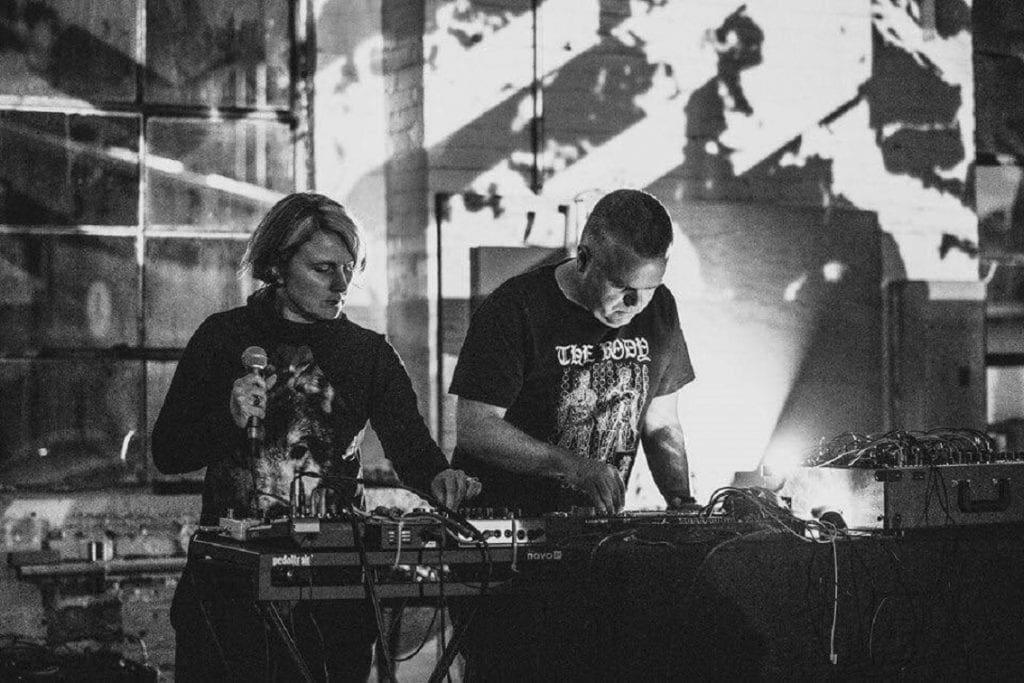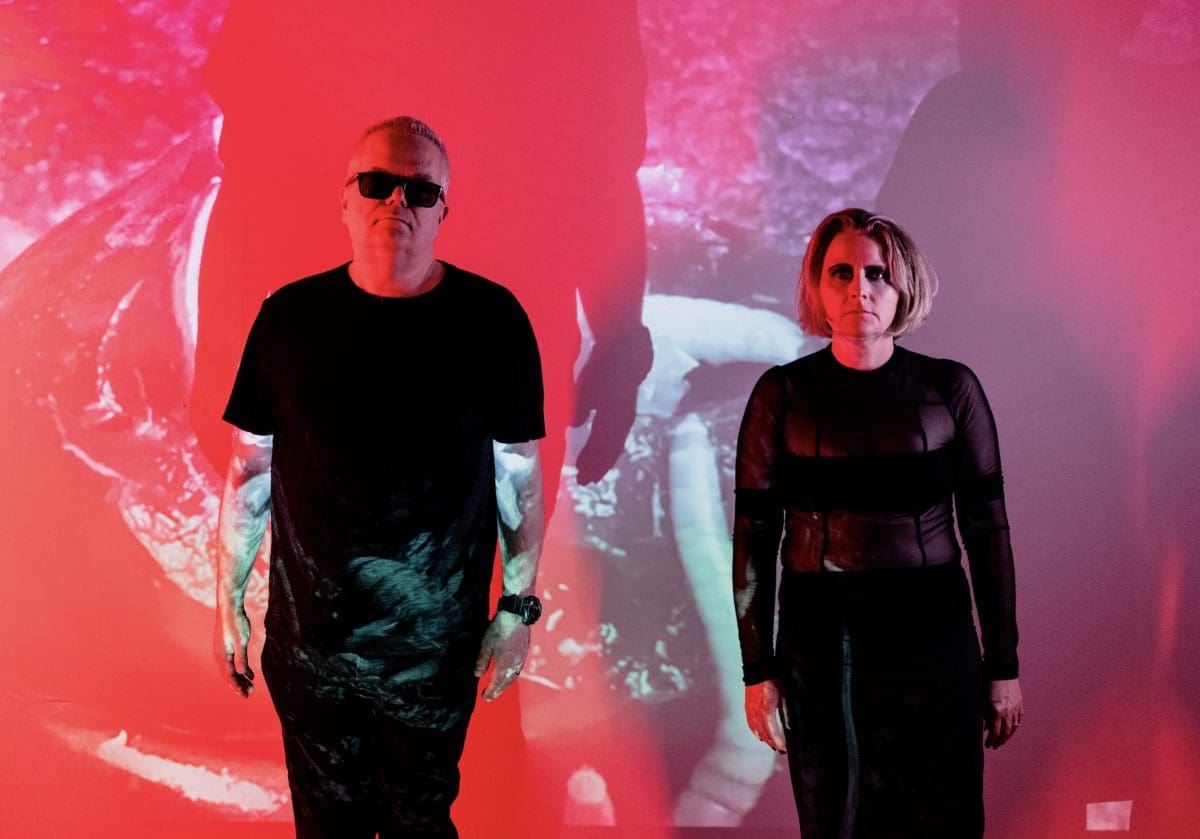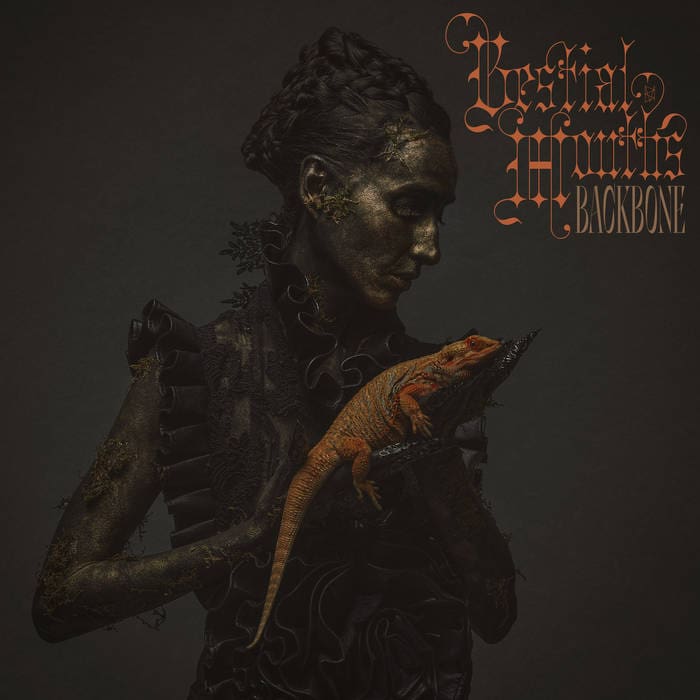‘Click Interview’ with SNOWBEASTS: ‘I Don’t Want To Be Doing The Same Thing Over And Over Again’

Hailing from New England (USA) Rob Galbraith (aka ‘Raab Codec’) and Elizabeth Virosa are now active for several years as SNOWBEASTS. They already released an impressive number of productions and last year unleashed their newest opus “Energy”. The album was released on M-Tronic, revealing an impressive mix of influences; from IDM and Techno to Minimal-Electro, Trance and Electro-Industrial the album is characterized by a very personal approach. “Energy” is an absolute masterpiece and definitely one of my favorites from 2020. I’d a chat with Rob and Elizabeth.
(Picture credit by Lüke Haughwøut / Interview courtesy by Inferno Sound Diaries)
Q: You guys are involved with different music projects like MON<O>TAUR, PATTERN BEHAVIOR, OBSCURE FORMATS and of course SNOWBEATS. Which projects are still active today? How do you make the difference between the projects and is there a different approach?
Rob: Right now SNOWBEASTS is our primary project and outlet for musical creativity. SNOWBEASTS is spread across several different directions so it can be a bit hard to pin down. Typically we start with an overall concept when we start a new album -is it going to be more atmospheric? Is it going to be more dance oriented? And then go from there. “Energy” was an attempt to bring more of the Dark-Techno that we play live into our recorded works. With SNOWBEASTS we try to bring more organic elements in to the music and use more acoustic sound sources like waterphone, bone trumpet, and zithers.
OBSCURE FORMATS is the other active project and the scope is more narrow and Techno-oriented. The three OBSCURE FORMATS albums that came out last year were all done in a very short period of time (a couple weeks each for the first two). For that project I try to keep things a bit more raw and really try to avoid overthinking.
We are talking about doing some new PATTERN BEHAVIOR tracks in 2021, but that is really just in the planning stages right now. MON<O>TAUR is a bit different in that we were working with our friend, David Dodson, on it so it brings his personality and influence in the mix as well. We have talked about doing more tracks together but nothing yet.
Q: SNOWBEASTS is now active for several years and has already released an impressive discography. Where does this creativity comes from and how would you analyze the evolution from the early work till the newest album “Energy”?
Rob: For me the creativity comes from all over the place. I really try to keep my ears open to both the music I love and the things that I’m not so into. It could be just a matter of hearing the way a drum loop is processed or a simple click in a sound that gets me thinking about a new track. Emotion also plays into what I put into music. It may not always be completely articulated, but it definitely plays a huge role.
I think the evolution may be in part due to my short attention span. I get bored easily and as a result, I don’t want to be doing the same thing over and over again. I sort of see three distinct evolutionary points in SNOWBEASTS starting with the Dark-Ambient of the first album, and then moving to the Down-Tempo beats of “Instincts”, and then the third being the more dance oriented tracks on “Energy”. That being said, I totally feel comfortable moving back and forth within those realms.
Q: “Energy” has been released nearly one year ago now. How do you look back at the writing and production process of the album and can you give us more details about the concept, sound and influences?
Elizabeth: Before working on the album we discussed trying to attempt to create a dark atmospheric sound at a faster BPM and seeing if we could accomplish that. The time it took us to complete the album was a bit slower than it typically takes us to complete albums in the past as this took us about a year to complete. There are a few tracks with lyrics. Those I would write after adding more indistinguishable vocalizations just to come up with a melody or rhythm to go with the drums or other sounds Rob added. Sometimes we kept those if they worked.
Rob: For influences, I don’t think we can particularly pin it to particular artists, but I was definitely listening to a lot of Techno while writing “Energy”. I wanted to fuse that with more organic elements and the moods and atmospheres we explore with SNOWBEASTS.
Q: How do you guys work together? What makes the complementarity between you both?
Elizabeth: In general Rob is behind the computer using the daw while I’ll contribute and record vocals or record instrument samples or drones or pads from synths although sometimes I take over while he records drums or baselines or other sounds from Eurorack equipment. We pretty much both work on the arrangements together. I might start it or he will until one of us finishes it.
Typically most tracks begin with a sound from an instrument we might have acquired say a bone trumpet, field recordings or maybe a Eurorack instrument. Something that is typically new for us to explore and has the characteristics and color we are looking for.
Where I complement his approach and style is typically in the process of slowing things down enough to analyze things, but without paralysis. Basically, I ask questions and give a lot of feedback while we are working unless it does not need it and sounds amazing.
Q: I noticed more and more artists are getting back to modular- and analog gear to write their music. What makes the magic of vintage equipment and what did it add to your work?
Rob: For me analog synths provide a sense of immediacy and tactile interaction. I love to be able to twist and modulate sounds in real time without having to map a controller. With modular, it comes down to the absolute freedom of things and being able to made something new and predictable every time I turn on my modular cabinets. I am by no means an analog purist and mix a fair amount of drum samples and VSTs in to the mix. It really comes down to what works best for you and your workflow. I have heard people do amazing things with very minimal computer based setups-so you don’t necessarily need a wall of modular gear to make interesting music.
Elizabeth: Rob introduced me to Eurorack systems a few years back when we first started working on SNOWBEASTS, when working with these types of tools what I suppose seemed magical was when we created sounds that were unexpected and powerful while playing in the studio. Sometimes the way modules patched together did not seem to fully explain its sound and that way it seems as if there is something else influencing the final outcome.
Q: Next to “Energy” you also released 2 albums together with SOLYPSIS. How did this collaboration happened? Was there a specific focus and/or concept in this collaborative work?
Rob: SOLYPSIS had originally reached out to have Elizabeth’s voice on one of his tracks. We were all really happy with the results and decided to work on the first SNOWBEASTS & SOLYPSIS album together. The first album was written mostly while I was on furlough from my last job. James and I would bounce ideas and files back and forth during the day and then Elizabeth would add to the tracks when she finished up with work in the evenings. James and I work really well together and he brings a ridiculous amount of enthusiasm to the project. The first album felt like an artistic success and we got a really good response from it so it seemed only natural to do a second album which brought us to “Fever Dream”. Right now we are compiling a remix album of the track on “Fever Dream” and have some amazing remixers on board.
Since you’re here …
… we have a small favour to ask. More people are reading Side-Line Magazine than ever but advertising revenues across the media are falling fast. Unlike many news organisations, we haven’t put up a paywall – we want to keep our journalism as open as we can - and we refuse to add annoying advertising. So you can see why we need to ask for your help.
Side-Line’s independent journalism takes a lot of time, money and hard work to produce. But we do it because we want to push the artists we like and who are equally fighting to survive.
If everyone who reads our reporting, who likes it, helps fund it, our future would be much more secure. For as little as 5 US$, you can support Side-Line Magazine – and it only takes a minute. Thank you.
The donations are safely powered by Paypal.











